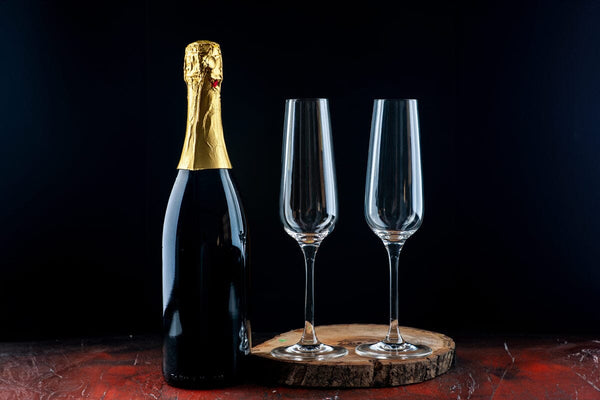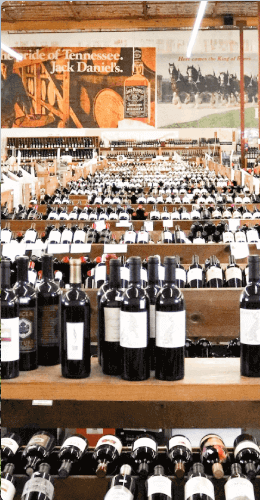What Does Dosage Mean in Wine?

Dosage is one of those key terms connected to traditional method sparkling wines that you must know. It relates directly to the style of wine produced, and without it, Champagne would not be what it is. There’s more to dosage than simply the technique, however, as it reflects trends, fashions, and tastes in sparkling wine as they evolve through time.
What is Dosage?
Dosage occurs after the wine has already gone through a second, in-bottle fermentation. The bottle is opened to remove the lees, or dead yeast cells, which have collected in the bottle neck. Then the dosage liquid is added. You will find this méthode traditionnelle technique used not only in Champagne but also Cava, Franciacorta, the occasional Prosecco, and many New World sparklers, all of which you will find when you order wine online.
The dosage, or dosing, is thus the final touch added to the wine before the bottle is definitively sealed. It involves adding a small amount of dosage liquor, also known as expedition liquor, which consists of cane sugar dissolved in wine at a concentration of 500 to 750 g/l. The quantity used for the dosage depends on the type of wine desired:
- Brut Nature, Non-Dosé, or Brut Zéro (less than 3 g of sugar per liter). No sugar is added.
- Extra-Brut (less than 6 g of sugar per liter)
- Brut (less than 15 g of sugar per liter)
- Extra Sec (12 to 20 g of sugar per liter)
- Sec (20 to 32 g of sugar per liter)
- Demi-sec (32 to 50 g of sugar per liter)
- Doux (more than 50 g of sugar per liter)
Dosage in History
Today, the average dosage in Brut Champagne is much lower than it was decades ago, reflecting a broader trend towards less sweet wines. Why is that? Yes, dosage is subject to trends and fashion.
Initially, Champagne was sweet, often consumed as a dessert wine. However, by the mid-19th century, British and American taste preferences shifted towards drier styles. This led to the creation of Brut Champagne, with Madame Pommery pioneering the first one in 1874.
During the 20th century, the demand for Brut Champagne grew, with its production increasing significantly. This shift was driven not only by consumer preferences but also, more recently, by climate change, which has impacted grape ripening and acidity levels, further influencing winemaking techniques such as malolactic fermentation. Champagne expert Jean-Remi Barbier analyzed dosage, including conducting interview with Champagne’s governing body. “Skipping the dosage step is an anti-conformist move”, the CIVC admits. The topic has become hot. “We are faced to another style of champagne, with fully-fledged quality” says Thibault Le Mailloux, director of communication at CIVC. “Like a niche wine that would keep a novelty character that can seduce different markets.”
The Zero Dosage Trend
There is a movement toward low or no dosage sparkling wines. In Spain’s Cava DO, the Brut Nature wines with no added sugar can still pack plenty of fruity aromas and flavors because the grapes are cutlivated mostly in warm Mediterrnanean climates. It’s worth trying Cava when you buy wine online from the best wine store, Bottle Barn.
Yet even for Champagne, in northern France, zero dosage is a thing. In an interview with VinePair, Ryan White, beverage director at Manhattan luxury building 432 Park Avenue, spoke about dosage. “Zéro dosage Champagne was pioneered, and is being driven still today, by winemakers who wish to showcase their vineyards’ individual terroir and unique qualities and attributes over that of homogenous flavor,” White says. “Reducing, or in some cases outright eliminating, the final addition of sugar to the wines in bottle better guarantees that those crisp, sharp, racy, linear, vinous aromas and flavors will not be masked or lost.”
Modern winemakers, like those at Champagne Louis Roederer and Champagne Suenen, emphasize minimal or zero dosage to highlight the terroir's natural characteristics. Appreciated among the gastronomes and enthusiasts, zero dosage is preferred by more experienced wine drinkers, especially Scandinavians, Japanese, and Americans – they see it as a “diet” sparkler, which is a misconception according to Frédéric Panaïotis, chef de caves at Ruinart: “because there is only 4 kcal difference between a glass of zero dosage and a glass of brut.”
This no-dosage approach, while once seen as unconventional, has thus gained popularity among certain markets, including Scandinavia, Japan, and the United States. The rise of low-dosage and zero-dosage champagnes represents a significant trend in the industry, with more producers embracing these styles to meet the evolving tastes of consumers and the challenges posed by climate change. Tradition, innovation, and market demands have huge impacts on the simple technique of dosage.


















Leave a comment